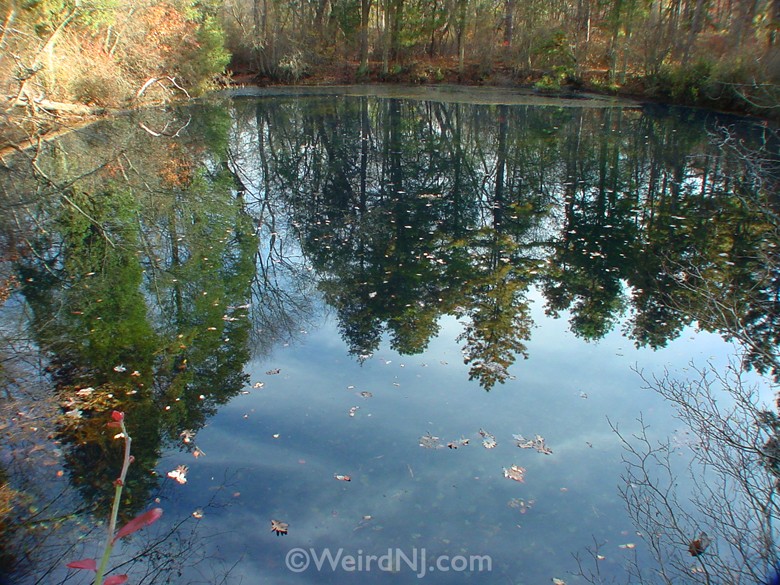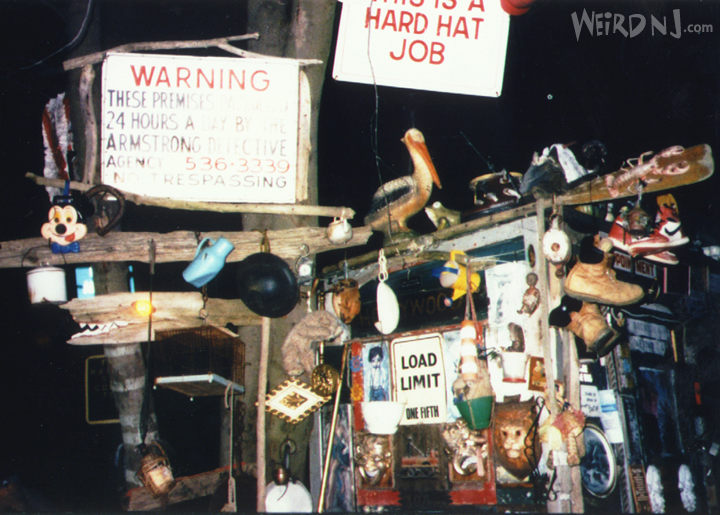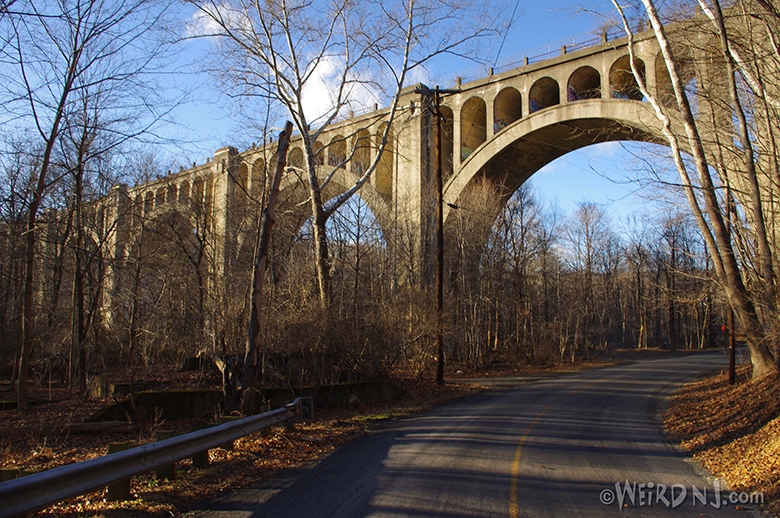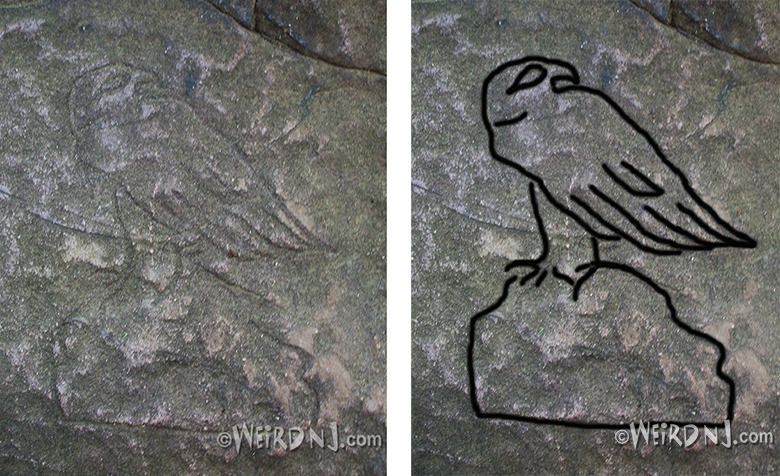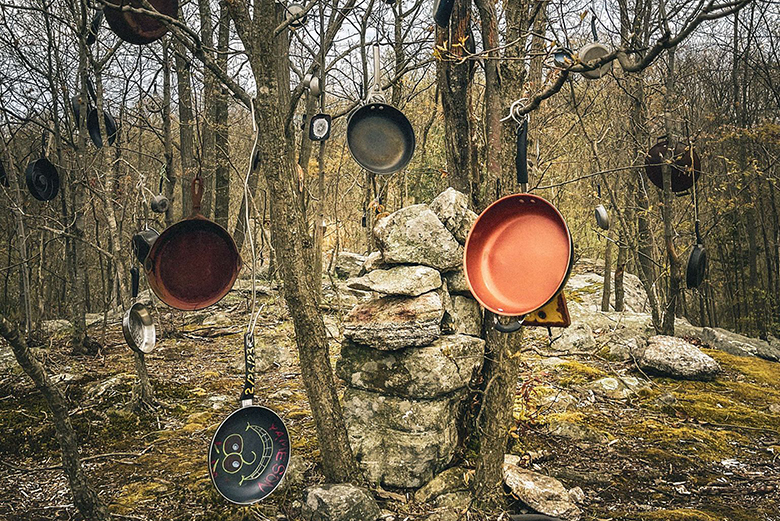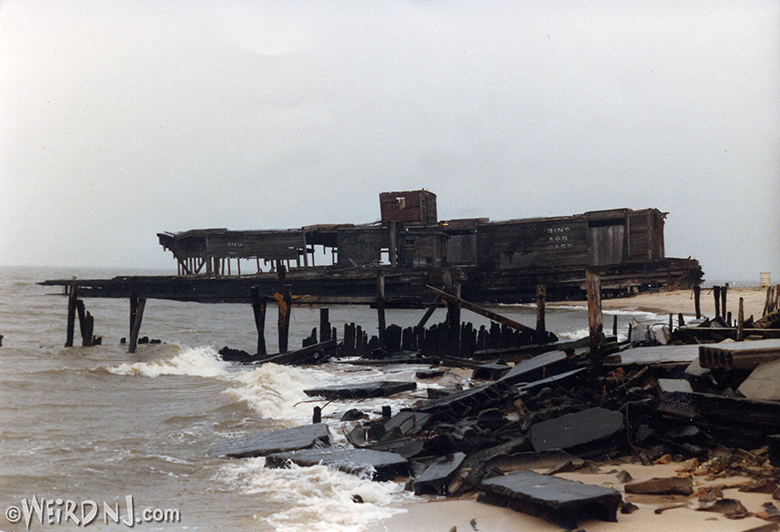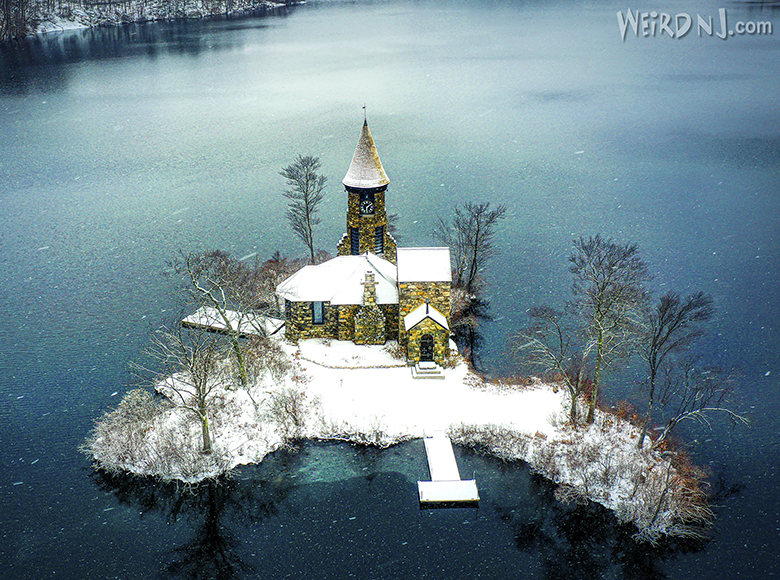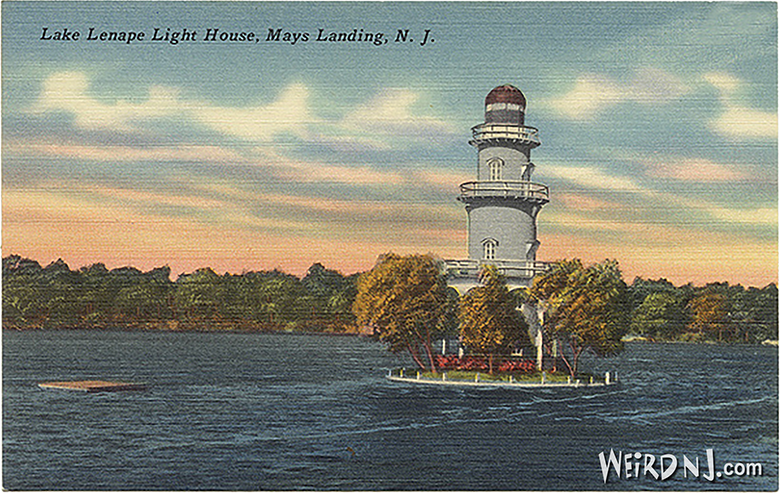Legends of the Blue Hole
One of the most storied sites in all of southern New Jersey is a mysterious body of water known as the Located deep in the Pine Barrens of Winslow, this small but legendary pool is said to not only be bottomless, but also a frequent pit stop of the Jersey Devil.
One of the most storied sites in all of southern New Jersey is a mysterious body of water known as the Blue Hole. Located deep in the Pine Barrens of Winslow, on the border of Camden and Gloucester Counties, this small but legendary pool is said to not only be bottomless, but also a frequent pit stop of the Jersey Devil.
Though its icy blue-tinged water might seem inviting, especially on a hot summer day, locals warn their children to stay away from the Blue Hole and to never go swimming there. Tales of unexplained whirlpools which suck down hapless swimmers have long been part of the Hole’s lore. Some who have been lucky enough to escape its clutches have claimed that they actually felt something, perhaps the Jersey Devil himself, pulling them down into the chilly depths.
 The bottom of the Blue Hole, if indeed there is a bottom, is said to be made of a fine sand, sometimes referred to as “sugar sand,” which locals liken to quicksand. When we visited the notorious Hole we found ourselves navigating through narrow pineland trails made up of this same treacherous sand. Sure that at any moment our Jeep would get hopelessly bogged down, we decided to ditch the vehicle and continue our quest on foot.
The bottom of the Blue Hole, if indeed there is a bottom, is said to be made of a fine sand, sometimes referred to as “sugar sand,” which locals liken to quicksand. When we visited the notorious Hole we found ourselves navigating through narrow pineland trails made up of this same treacherous sand. Sure that at any moment our Jeep would get hopelessly bogged down, we decided to ditch the vehicle and continue our quest on foot.
It was a beautiful autumn day as we wondered the wooded paths of the Winslow Wildlife Management Area. The underbrush was awash with bright cranberry-red and golden colored leaves, and the sound of birds chirping filled the sweet smelling air. As we approached the Blue Hole though, the atmosphere seemed to change. The birds were heard no more and in their stead was an eerie silence. The quiet was soon shattered however, by the echoes of shotgun blasts from a nearby firing range which rang through the tranquil forest.
The surface of the Blue Hole was as still as glass, and a thermometer that we’d brought to measure its temperature read a chilly 50 degrees Fahrenheit. Although the water was crystal clear we could see no signs of life in the Hole what-so-ever; no fish, no insects – nothing. There was something unsettling about this void, and suddenly it seemed easy to imagine why people might warn their children not to venture into these waters.
Although it might have a bad reputation now, this was not always the case with the Blue Hole. In the 1930s the site was a popular picnic spot and swimming hole amongst the locals. In the 1940s though, a storm washed out a wooden bridge over the nearby Egg Harbor River, cutting off the main access route to the Blue Hole. Ever since then it has remained isolated in a dense forest of scrub pines, accessible only by foot or off-road vehicle.
The Blue Hole is approximately 130 feet across, almost perfectly round, and has steep banks. Its waters remain curiously cold, even in the hottest summer months, averaging about 58 degrees. Unlike most bodies of water in the Pine Barrens, which bear a coloration similar to tea due to the high content of iron, tannic acid, and suspended sediment, the water of the Blue Hole is perfectly clear.
Its waters remain curiously cold, even in the hottest summer months, averaging about 58 degrees. Unlike most bodies of water in the Pine Barrens, which bear a coloration similar to tea due to the high content of iron, tannic acid, and suspended sediment, the water of the Blue Hole is perfectly clear.
There are several theories as to how the Blue Hole came to be. Some say that it is the result of a meteorite striking the Earth. Others claim that it is what geologists call a pingo. A pingo is a small body of water which is the result of an ice mass which forms beneath permanently frozen soil during an ice age. The ice mass expands for thousands of years then breaks through the permafrost to create a depression rimmed by a hill. When the climate warms, the ice melts, forming a pool.
But what about the fabled whirlpools, or what the locals refer to as “whirlypools,” which are said to drag down unsuspecting swimmers to their watery graves? How could such a current exist in such a seemingly placid body of water? One explanation for this might be that the Blue Hole is fed by ground water, not the nearby stream. This fact accounts for why the water does not contain the same murky color as the river, and might also be the reason for the mysterious surges of current.
Scientific rational does little to lessen the mysteries of this curious body of water though, which seem to run as deep as the Blue Hole itself.
Don’t Dive in the Blue Hole!
I mentioned the Blue Hole to my dad, who has lived in South Jersey all his life. Much to my surprise, he knew exactly what I was talking about. When he was a kid, growing up in Blue Anchor (part of Winslow), he and his friends would go swimming in the creek about a hundred feet from the Blue Hole. My dad was told never to go swimming in the Blue Hole because it was bottomless and freezing cold. Of course, my dad and his friends immediately had to try it. One jumped in, then climbed right out. The water was indeed freezing in the middle of summer. Another one of my father’s friends who dove in did not escape as easily.
The hole looks to be about 70 feet across and roughly circular. The edges appeared to be raised, which was consistent with one of the rumors I had read: that the Blue Hole was actually a crater from an ancient meteor. The bottom, at least on the edge, was only about a foot.
An eerie calm hung over the entire spot when I visited the Blue Hole. Maybe it was the ghost of one of my father’s friends, who dove in headfirst and broke his neck. –Tony D.
Blue Hole Too Deep to Fathom
I grew up visiting the Blue Hole often and can confirm the story. Henry Charlton Beck, a renowned, credible historian of NJ, devotes a chapter to the Blue Hole and its legends in his book Forgotten Towns of Southern New Jersey. In it, he recounts tales from old piney folk about people who died in the Hole over the years, as well as the occasion when a group of scientists visited the Hole to determine its depth. To accomplish this, they lower an enormous length of twine with a heavy weight tied to the end of it into the water. After dropping a mile of twine into the center of the hole, they gave up their investigation (this was in the 1920s, I believe). –Eric J.
Dragged Down in the Blue Hole
The water is deep blue and ice cold. I too hear that there is an under current that pulls swimmers to the bottom. Strange thing is there is a murky lake nearby, but this “Hole” is crystal clear while the deep part is blue. Rumor has it that it is about 100 ft. deep and that many people have drowned in it. –Rob G.
An audio story told by Mark Moran with sound collage by Clay Pigeon. One of a series of Waking Weird episodes which can be heard broadcast live every Monday at 8:39 am (EST) at WFMU FM and WFMU.org. Hear the program archives at www.wfmu.org/playlists/WA. Hear more audio stories HERE.
The preceding article is an excerpt from Weird NJ magazine, “Your Travel Guide to New Jersey’s Local Legends and Best Kept Secrets,” which is available on newsstands throughout the state and on the web at www.WeirdNJ.com. All contents ©Weird NJ and may not be reproduced by any means without permission.
Visit our SHOP for all of your Weird NJ needs: Magazines, Books, Posters, Shirts, Patches, Stickers, Magnets, Air Fresheners. Show the world your Jersey pride some of our Jersey-centric goodies!
Retro Weird Wear Never Goes Out of Style…or Out of Stock!
Now you can have all of your favorite designs from the past on all kinds of cool new Weird Wear: Men’s Wear, Women’s Wear, Kids, Tee Shirts, Sweatshirts, Long Sleeve Tees, Hoodies, Tanks Tops, Tie Dyes, Hats, and accessories like Mugs, Backpacks, Stickers, Buttons and more! All are available in all sizes and a variety of colors.
Represent Jersey!

